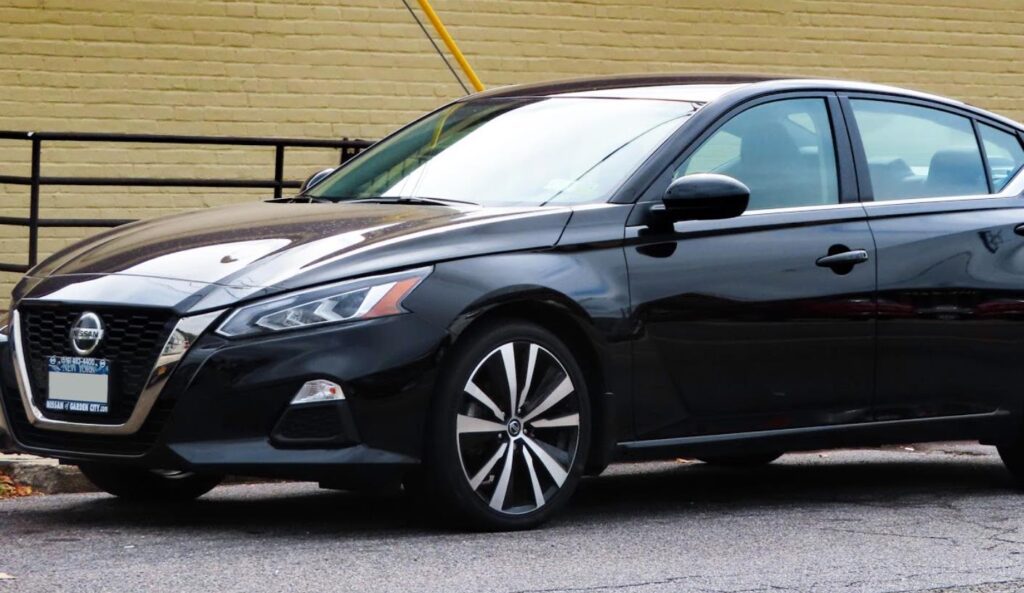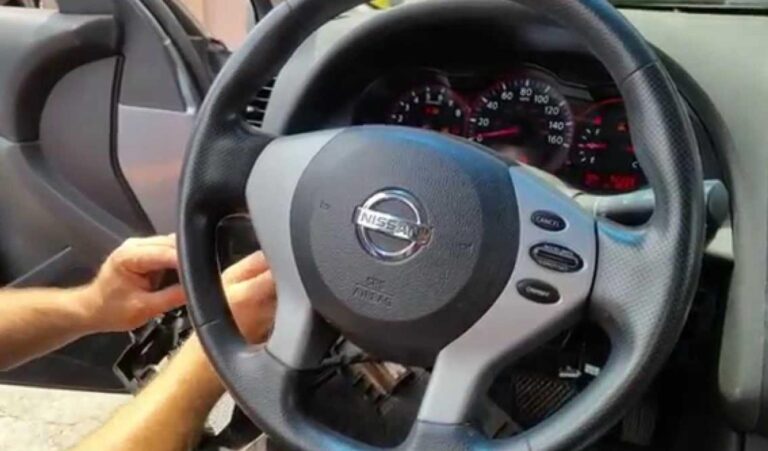What Year Nissan Altima To Avoid? Quick Answer
When it comes to buying a used car, one of the most common questions is which year model to avoid. In the case of the Nissan Altima, this question is particularly relevant given the car’s history of mechanical issues. So, What Year Nissan Altima To Avoid? Let’s delve into the details.
What Year Nissan Altima To Avoid
The answer is 2013. The 2013 Nissan Altima has the most overall complaints and is rated as the worst model year due to engine problems.

Why Is 2013 The Worst Year For Nissan Altima?
The 2013 Nissan Altima is considered the worst model year due to multiple severe issues, particularly with its CVT transmission. According to the source, problems with this model year typically occur at around 53,000 miles and have an average repair cost of $3,300. Here are some specific reasons why the 2013 Nissan Altima stands out as the worst:

- High Severity of Transmission Problems: The 2013 model has a severity rating of 8.3 for its transmission issues, which is quite high. This indicates that the problems are not just frequent but also severe in nature, affecting the vehicle’s performance and safety.
- Multiple Problem Trends: This year’s model didn’t just have one type of transmission issue; it had multiple. Problems ranged from the gear shift getting stuck in the park to complete transmission failure.
- High Repair Costs: The typical repair cost for transmission problems in the 2013 Nissan Altima is around $3,100. In some cases, a new transmission is required, which can cost between $1,000 and $6,000.
- Extended Warranty Limitations: Although Nissan extended a warranty for CVT transmission issues, the problems with the 2013 model were so severe that they often occurred outside the extended warranty period, leaving owners to cover the high repair costs themselves.
- Other Issues: In addition to transmission problems, the 2013 model also had issues with interior accessories, the heater, windows, and steering, making it problematic in multiple areas.
Other Problematic Years
2009 Nissan Altima
The 2009 Nissan Altima is well-known for its steering wheel lock failure. The average cost to fix this issue is $900, and it generally occurs at around 90,000 miles.
2014 Nissan Altima
The 2014 model is another year to be cautious of, mainly due to its transmission failure issues. The average cost to fix this problem is $3,800, and it usually happens at around 74,000 miles.
How To Identify These Issues in a 2013 Nissan Altima?
Identifying issues in a 2013 Nissan Altima, especially those related to the problematic CVT transmission, is crucial for both current owners and potential buyers. Here are some ways to identify these issues:

Transmission Problems
- Shuddering and Vibration: If the car shudders or vibrates while accelerating, it could be a sign of a failing CVT transmission.
- Unusual Noises: Whining or clunking noises coming from the transmission are red flags.
- Delayed or Rough Shifting: If the car hesitates or struggles when shifting gears, it may indicate a transmission issue.
Interior Accessories Issues
- Malfunctioning Controls: Problems with the air conditioning, radio, or other interior controls can indicate electrical issues.
- Dashboard Warning Lights: Pay attention to any warning lights on the dashboard, especially the check engine light, as it can indicate a variety of problems.
Heater Problems
- Inconsistent Heating: If the heater is not maintaining a consistent temperature or takes a long time to warm up, it could be a sign of a problem.
Window and Steering Issues
- Difficulty in Rolling Windows: If the windows are hard to roll up or down, it could indicate a mechanical issue.
- Steering Wheel Resistance: If the steering wheel is hard to turn or feels “sticky,” it could be a sign of a steering problem.
General Tips
- Check for Recalls and TSBs: Always check for any recalls or Technical Service Bulletins (TSBs) related to the 2013 Nissan Altima.
- Professional Inspection: Before buying a used 2013 Nissan Altima, it’s advisable to get it inspected by a certified mechanic who can run diagnostic tests to identify any hidden issues.
By being aware of these signs and symptoms, you can take timely action to address any issues, potentially saving you from more significant problems and financial burdens down the line.
What To Do If You Own A Problematic 2013 Nissan Altima?
Owning a problematic model like the 2013 Nissan Altima can be stressful, but there are steps you can take to mitigate the issues and prevent further damage. Here’s what you can do:

Address Issues Promptly
- Immediate Diagnosis: If you notice any of the symptoms mentioned earlier, get your vehicle diagnosed immediately. Ignoring the problem can lead to more severe issues and higher repair costs.
- Consult a Certified Mechanic: Always consult a certified mechanic who specializes in Nissan or transmission issues for a thorough inspection and diagnosis.
Check for Recalls and Warranties
- Recall Information: Check if there are any recalls for your specific model year. If there are, the repairs could be covered by Nissan.
- Warranty Status: Check the status of your vehicle’s warranty. Nissan extended the warranty for certain models with CVT issues, so you might be covered for repairs.
Get Multiple Quotes
- Cost Estimates: If your vehicle is out of warranty, get multiple quotes for the repair work. This will give you a better idea of how much you should be paying.
Consider Selling or Trading
- Resale or Trade-in: If the repair costs are too high and the vehicle is becoming a money pit, consider selling it or trading it in for a more reliable model.
Regular Maintenance
- Scheduled Maintenance: Stick to a regular maintenance schedule to keep the car in the best possible condition. This includes regular oil changes, filter replacements, and transmission fluid checks.
Legal Options
- Consumer Rights: If you’ve purchased a lemon, you may have legal options. Consult consumer protection laws in your state to see if you can get a refund or replacement.
Stay Informed
- Online Forums and Groups: Join Nissan Altima forums or social media groups to stay updated on common issues, recalls, and solutions.
By taking these steps, you can either fix the issues with your problematic Nissan Altima or make an informed decision about selling or trading it in.
More Insights into Nissan Altima Models

Recalls and Technical Service Bulletins (TSBs)
Importance of Recalls and TSBs
When considering a used Nissan Altima, it’s crucial to check for recalls and Technical Service Bulletins (TSBs). Recalls are safety-related, while TSBs are more about the quality and performance of the vehicle.
Where to Find This Information?
You can find this information on the National Highway Traffic Safety Administration (NHTSA) website or directly from Nissan’s official website.
Resale Value
Why Resale Value Matters?
The resale value of a car can be a good indicator of its reliability and demand. A model with a high resale value is generally considered to be more reliable.
Nissan Altima Resale Value
The Nissan Altima generally has a moderate resale value compared to other cars in its class, but this can vary depending on the year and condition of the car.
Fuel Efficiency
Importance of Fuel Efficiency
Fuel efficiency is another critical factor to consider. More fuel-efficient models will save you money in the long run.
Nissan Altima Fuel Efficiency
The Nissan Altima is known for its decent fuel efficiency, especially the models with a 2.5-liter engine.
Maintenance Costs
Why Maintenance Costs Matter?
High maintenance costs can turn an otherwise affordable car into an expensive long-term commitment.
Nissan Altima Maintenance Costs
The Nissan Altima is generally considered to have moderate maintenance costs, but this can vary depending on the year and mileage of the car.
Safety Ratings
Importance of Safety Ratings
Safety should be a top priority when choosing a used car. Always check the safety ratings from reputable organizations.
Nissan Altima Safety Ratings
The Nissan Altima has received good safety ratings in recent years, particularly in models equipped with advanced safety features.
User Reviews
Why User Reviews Matter?
User reviews can provide real-world insights into the pros and cons of owning a Nissan Altima.
Where to Find User Reviews?
Websites like Edmunds and Kelley Blue Book offer comprehensive user reviews that can be very informative.
Which Year Nissan Altima Is The Best?
The best year for the Nissan Altima is subjective and depends on what you prioritize—fuel efficiency, safety, or performance. However, the article did not specifically mention which year is considered the best for Nissan Altima.

It’s generally a good idea to look for models that are not only newer but also have fewer complaints or issues related to them. Newer models are likely to have updated technology and safety features.
What Years Did Nissan Altima Have Bad Transmission?
The Nissan Altima has had a history of transmission problems, especially between the years 2002-2013. The worst model year, according to the source, is the 2013 Nissan Altima.

It had severe problems with its CVT transmission, typically occurring at around 53,000 miles and costing an average of $3,300 to fix. Other problematic years include:
- 2002: Issues with powertrain and automatic transmission.
- 2003: Minimal transmission problems compared to other years but still present.
- 2005: Transmission jerking, failing, and slipping.
- 2007 & 2008: Defective trend of CVT transmission failure around 100,000 miles.
- 2011 & 2012: CVT transmission issues generally at the 100,000-mile mark.
Which Nissan Altima Models Are Safe To Buy Used?
The article suggests that if you’re considering buying a used Nissan Altima, you should be cautious of models produced between 2002 and 2013 due to prevalent transmission issues. It’s advisable to schedule an inspection with a trusted mechanic specializing in transmissions before making a purchase.
Newer models or those with fewer complaints are generally safer to buy used. Nissan extended a warranty for CVT transmission issues, so models with this extended warranty might also be a safer bet.
Conclusion
In summary, if you’re in the market for a used Nissan Altima, it’s crucial to know what year Nissan Altima to avoid. The 2013 model tops the list due to its numerous engine problems, followed by the 2009 and 2014 models for steering wheel and transmission issues, respectively. Being aware of these problematic years can save you from future headaches and financial burdens.
Top FAQ’s
What is the best-built and most reliable Nissan Altima between 2015-2019?
A user with experience in Heating, Ventilation, and Air Conditioning suggests going back to before the year 2000 to find a very reliable Nissan Altima. He also advises avoiding the CVT transmission for better reliability.
Is it risky to buy a 2009 Nissan Altima with 100k miles?
According to a user with 50 years of experience working on cars, it is risky due to the CVT transmissions used during that period. Nissan extended the warranty to 10 years/120,000 miles to avoid lawsuits.
What is a good upgrade to make my 2013 Nissan Altima get better gas mileage?
A car enthusiast suggests improving driving habits, keeping tires properly inflated, using cruise control on the highway, and regular maintenance like clean air and gas filters for better gas mileage.
What are the best-used midsize sedans for less than $10,000?
A registered auto tech suggests the Nissan Altima as one of the options but advises avoiding early to mid-2000s GM and Nissan 3.5 V6 due to timing chain problems.

Welcome to the exhilarating world of Matt Rex, a professional car racer turned renowned vehicle enthusiast. Immerse yourself in his captivating blog as he shares heart-pounding adventures, expert reviews, and valuable insights on cars, trucks, jets, and more. Fuel your passion for speed and discover the beauty of vehicles through Matt’s engaging stories and meticulous expertise. Join the ever-growing community of enthusiasts who find inspiration and expert advice in Matt Rex’s blog—a digital hub where the thrill of speed meets the pursuit of knowledge.







![Supra MK5 Lowering Springs [All You Need To Know]](https://www.turbochaos.com/wp-content/uploads/2023/09/Supra-MK5-Lowering-Springs.jpg)